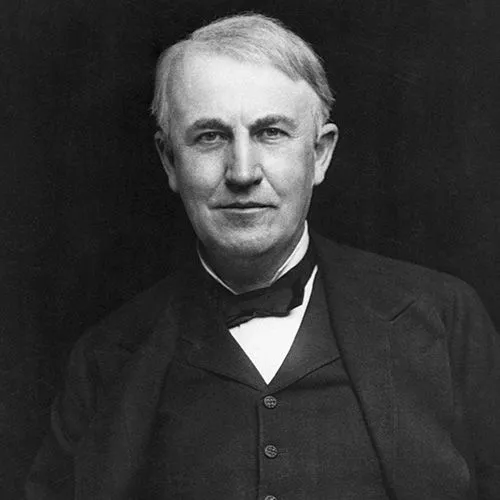Ever set a big, exciting goal that felt amazing… for about a week? Then your enthusiasm fizzled out, and it got left on the back burner. Don’t worry, you’re not alone! This is where motivation comes in – it’s that secret sauce that powers us to take action and chase our dreams.
Let’s be real: motivation isn’t always there when you need it. It’s a bit like a fickle friend sometimes! But here’s the thing: we can learn how to find it, strengthen it, and use it to finally accomplish those things on our to-do list that have been lingering forever.
Think of motivation as the fuel that pushes your goal-setting engine forward. Without it, you’ll stall out. With a steady supply, you’ll be unstoppable! Let’s dive into what motivation is and how it’s the key to reaching your full potential.
Understanding the Motivation in Goal Setting
Quick Overview of What Motivation Means
Motivation is that inner drive that gets you going. It’s the reason you push past obstacles and the force that makes you keep trying even when things get tough.
Think of it as the ‘why’ behind your actions. There are two main types of motivation:
- Intrinsic Motivation: This comes from within. You do something because you find it enjoyable, fascinating, or personally rewarding.
- Extrinsic Motivation: This stems from external sources like praise, rewards, or avoiding punishment.
The Importance of Motivation for Achieving Objectives
Reaching your goals takes way more than just writing them down and hoping for a miracle. That burst of excitement when you first set a goal? That’s often not enough to see it through.
This is where motivation steps in like a superhero! Here’s why it’s essential:
- Initiates Action: Motivation is the spark that sets things in motion. It turns goals from just ideas into actual steps you take.
- Provides Direction: A wellspring of motivation keeps you focused on your target, eliminating distractions.
- Boosts Persistence: When the going gets tough, those with strong motivation will fight back against procrastination and the desire to quit.
- Leads to Satisfaction: Accomplishing something you set your mind to, thanks to consistent motivation, fosters an awesome sense of pride and fulfillment.
"The only way to do great work is to love what you do. If you haven’t found it yet, keep looking. Don’t settle."
 Steve Jobs
Steve Jobs 10 Strategies in How to Motivate Yourself to Achieve Goals
Sometimes motivation needs a little kickstart —that’s where these strategies come in! Use these methods to jumpstart your drive and supercharge your progress:
- Start with Your ‘Why’: Dig deep and figure out the real reason you want to achieve this goal. Is it for financial freedom? Making an impact? Personal growth? A strong ‘why’ provides fuel when facing challenges.
- Break it Down: Big goals can seem scary and overwhelming. Shatter them into smaller, manageable steps. Celebrate each small win along the way to keep yourself motivated.
- Positive Visualization: See yourself clearly achieving your goal. What does it feel like? Imagine the triumph! This powerful mind trick tricks your brain into believing success is imminent.
- Accountability Buddies: Share your goals with someone you trust. Ask them to occasionally check in on your progress. Knowing someone believes in you adds an extra push.
- Reward Yourself: Even for tiny accomplishments! Recognizing your effort helps wire your brain for positive results and makes continued action feel fun.
- Find Inspiration: Read books, watch TED talks, or listen to podcasts by people who’ve achieved the things you dream of. Seeing their journeys sparks a “If they can, I can!” energy.
- Surround Yourself with Positivity: The people in your life influence your mindset. Seek out supportive relationships that lift you up and encourage your ambitions.
- Track Your Progress: Visibly seeing how far you’ve come is super motivating. Whether it’s a checklist, a journal, or an app, mark your successes!
- Don’t Fear Failure: Everyone stumbles on their journey. See setbacks as learning opportunities, not reasons to stop. Reframe them and keep pushing!
- Be Kind to Yourself: The path to any goal has ups and downs. Don’t get discouraged by imperfect days. Practice self-compassion and focus on picking yourself back up each time.
"Our greatest weakness lies in giving up. The most certain way to succeed is always to try just one more time."
 Thomas Edison
Thomas Edison Avoiding Motivation Decreases
Even the most driven people experience slumps in motivation. It’s normal! The key is to recognize the telltale signs and actively counter them before they derail your progress.
Here’s what to look for and how to get that fire burning again:
Signs Your Motivation is Dwindling
- Procrastination Overload: Is suddenly everything more appealing than working on your goal? This is often the first clue that motivation is waning.
- Dwelling on Negatives: Feeling overwhelmed by the task ahead or focusing on past failures is a motivation killer.
- Losing Your ‘Why’: When the reason behind your goal fades, so does your enthusiasm to make it happen.
- Fear Taking Over: The fear of failure or even success can lead to avoidance and self-sabotage.
How to Beat the Motivation Slump
- Take a Mini-Break: Sometimes stepping back for a short mental reset is all it takes to regain momentum.
- Refocus on Small Wins: Remember past successes to give yourself a boost of confidence.
- Change Your Environment: Moving to a different workspace can break you out of an unproductive routine.
- Just Start: It sounds cheesy, but the hardest part is often taking the first step. Once you get moving, inertia helps!
- Adjust Your Strategy: If your plan isn’t working, don’t be afraid to modify it. Try a different approach to reignite your spark.
Important Note: If you’re consistently struggling with motivation, reaching out to a coach or therapist might be helpful. Sometimes, there are deeper patterns at play that need to be addressed.
Overcoming Common Obstacles with Motivation
The road to any worthwhile goal will have its fair share of bumps and detours. These challenges are where that initial motivation gets put to the real test.
Let’s address common stumbling blocks and how to find your way back onto the path of achievement:
- Fear of Failure: Fear of not being good enough or messing up can lead to paralysis. Remind yourself that mistakes are how we learn. Focus on taking small actions, rather than obsessing over perfect outcomes.
- Perfectionism: Wanting everything to be flawless before starting can stall your progress. The truth is, done is better than perfect. Break tasks down as we discussed and accept that you can tweak them as you go.
- Burnout: Pushing yourself too hard for too long will deplete even the highest levels of motivation. Schedule intentional rest and recovery days into your plan to stay sharp and prevent motivational burnout.
A global Gallup study found that nearly 2/3 of full-time workers experience burnout on the job at some point.
- Comparison Trap: Focusing on what others are doing leads to frustration and discouragement. The only metric that matters is if you’re further ahead than yesterday!
- Self-Doubt: Everyone experiences those quiet, nagging doubts. When those internal critic voices get loud, actively counter them with a list of your strengths and past successes.

Don’t fight your obstacles alone. Reach out to your support network, a coach, or accountability partner. Their belief in you can be the boost you need when your motivation wavers.
"You must do the thing you think you cannot do."
 Eleanor Roosevelt
Eleanor Roosevelt Maintain the Motivation Until Achieve Habits
The secret to long-term success? Creating powerful habits! That initial burst of motivation is amazing for giving you a push, but to see lasting change, you want habits to take over.
Here’s a quick dive into the magic of habits and how they’ll be your new goal-achieving superpower.
What is a Habit and Why It’s Important?
Habits are those actions you do regularly on autopilot—brushing your teeth, lacing up your running shoes for your morning workout, the route you take to work. They are incredibly powerful for a few reasons:
- Conserve Mental Energy: Once something becomes a habit, you don’t need to consciously make the decision. This frees up brainpower for tackling bigger challenges.
- Effortless Execution: Habits eliminate those daily ‘should I, shouldn’t I?’ internal debates that lead to procrastination.
- Consistency = Results: Taking action toward your goals consistently, even in small ways, creates big outcomes over time. And the more automated the action, the easier it is to stay consistent.
Habits vs. Motivation
Think of motivation as the match that lights the fire, and habits as the logs that keep it burning. Here’s a simple breakdown:
| Motivation | Habits | |
|---|---|---|
| Driving Force | Emotions, desires, inspiration | Learned, unconscious behaviors |
| Sustainability | Comes and goes | Reliable and consistent |
| Role in Achieving Goals | Ignites the initial spark | Provides the everyday momentum |
How to Effectively Replace Motivation with Habits
Building new habits takes time and consistency, but it’s easier than you think! Here’s the play-by-play:
- Small and Specific: Start with tiny micro-habits. Instead of “Get Fit”, start with “do 10 push-ups each morning”. It may seem insignificant, but tiny victories lead to big ones.
- Cue It Up: Pair new habits with an existing routine. Already brush your teeth at night? Attach flossing right after for instant cueing.
- Environment is Key: Design your space to make desired habits easy and tempting and keep obstacles out of sight.
- Be Patient: There’s no exact timeline; focus on small wins daily. Consistency trumps intensity every time when it comes to habit formation.
"Motivation is what gets you started. Habit is what keeps you going."
 Jim Ryun
Jim Ryun Case Study: Sarah’s Fitness Journey
- Goal: Sarah always wanted to run a half-marathon but hadn’t exercised regularly in years.
- Initial Motivation: Inspired by a friend who completed a marathon, Sarah experienced a wave of enthusiasm. She bought new running shoes and workout clothes and mapped a beginner running program.
- The Challenge: In the early weeks, motivation ran high. However, as life got busy and the novelty wore off, it was a battle to get out the door each run. She was about to give up.

Shift to Habits
Sarah realized she couldn’t rely on fleeting motivation. She focused on making running a non-negotiable habit:
- Small Step: Starting with simply putting on her running clothes each morning.
- Cue: Placing her running shoes by the door, a visual reminder.
- Environment: Joining a beginners running group created support and accountability.
Results
Initially, some days involved walking more than running. But she kept putting on her shoes each day. Consistency turned her small habit into a love of running. Weeks turned into months, and as her fitness grew, so did her distances.
Finally, race day arrived, and Sarah crossed the finish line, tears of joy streaming down her face.
Key Takeaways
- Motivation was powerful when starting but it wouldn’t have gotten her to the finish line.
- Building the habit of ‘just showing up’ created momentum and progress.
- Success bred motivation —the stronger Sarah got, the more she craved her runs.
Remember, goal achievement is rarely a straight line. It’s a mix of burning initial motivation and then strategically turning ‘doing the work’ into an unbreakable habit!
Frequently Asked Questions
What if my motivation doesn’t come back, even with habit creation?
If you consistently struggle with low motivation, there might be bigger factors at play like burnout, stress, or even an undiagnosed health issue. Consulting a coach or therapist could be beneficial to rule out those issues and support you in rekindling your drive.
Are some people naturally more motivated than others?
There’s some truth to personality differences influencing baseline motivation. But more importantly, motivation is a skill you can learn and strengthen with practice. Focus on the action steps you can take over your innate level of motivation.
How long does it take to make motivation a habit?
There’s no one magic number. Building habits takes time and consistent repetition. The more you reinforce “do the thing” behavior, the sooner that ingrained pattern will make reaching your goals more effortless.
What do I do on days when even with habits in place, I still can’t get myself motivated?
It’s okay! This happens to everyone. Cut yourself some slack, remember self-compassion is key. Try one of these techniques:
- Take a true break – a walk, a change of environment, whatever refreshes you.
- Just go through the motions – sometimes “forcing” yourself for 5 minutes leads to increased energy.
- Do the absolute tiniest achievable step related to your goal.




